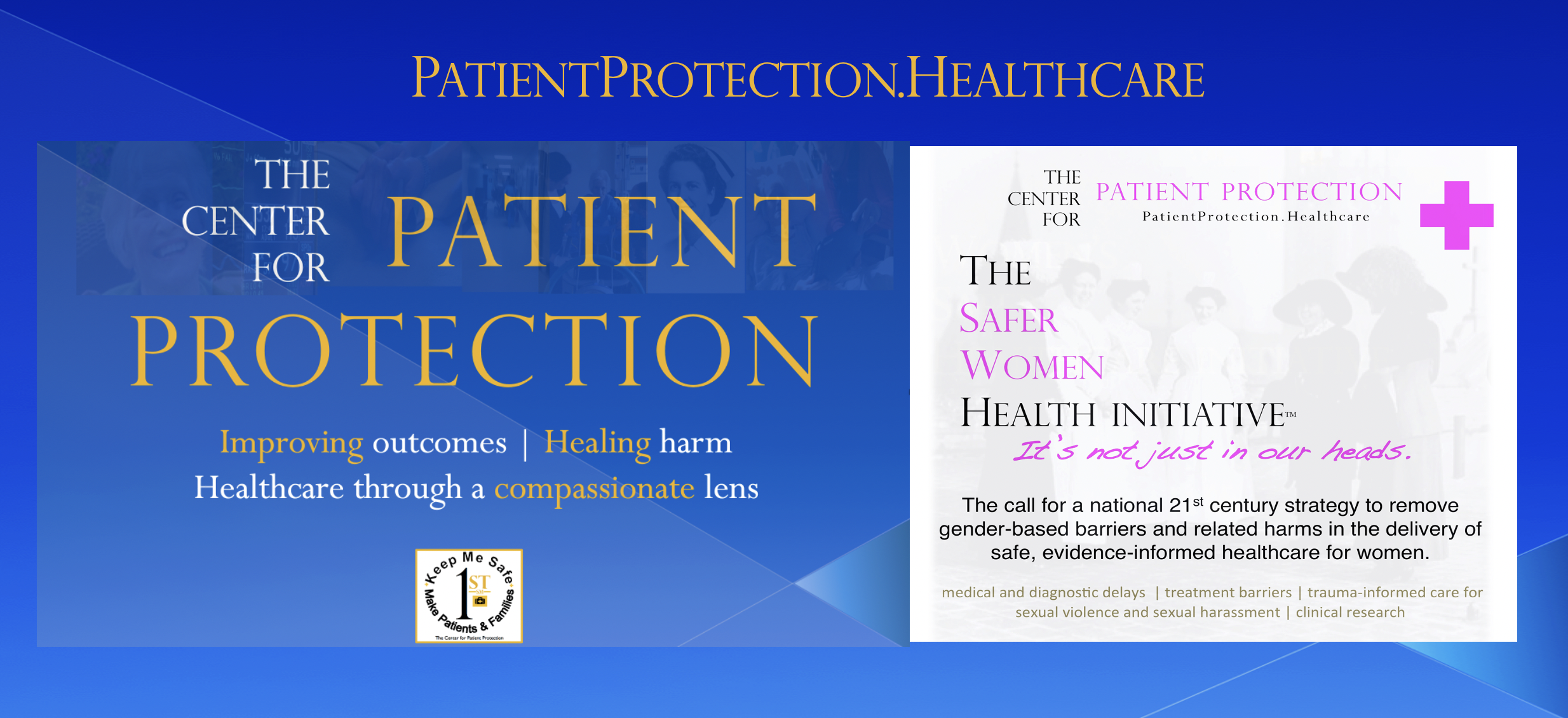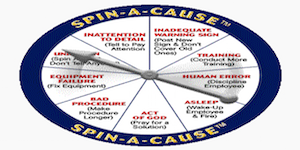- Home
- Touchstones for Patient Safety and Family Well-Being
- Turning Transparency into Patient Safety
Make full disclosure a central pillar of the healthcare process
In today’s world, having the right information about our health, and what is being done to us in the clinical setting, can make a huge difference in outcomes. Having the information is essential in making informed healthcare choices. Right now, there are too many barriers to transparent information that place patients at risk. The Center for Patient Protection is a ceaseless champion of greater transparency of medical information in all levels of our healthcare systems.
One of the alarming facts about hospital harm, the third leading cause of death in Canada and the United States, is that too many providers do not, and/or are not required to, report medical errors, harmful incidents or even deaths as a result of breakdowns in patient safety.
In fact, a report prepared by the U.S. Department of Health and Human Services’ Office of the Inspector General (OIG) in 2012 found that 6 out of every 7 hospital-based errors, accidents, and other adverse events still go unreported. Yet patient safety experts recognize that disclosure of errors and transparency in hospital practices is critical in creating and maintaining an informed healthcare public that can properly assess the risks to their health, and in creating a culture of patient safety.
From the Toronto Star’s interview with Kathleen Finlay, June 2019
I’ve been pushing for greater transparency at all levels of health care for some time — everything from hospital safety ratings and medical error disclosure to a national data bank for disciplinary actions/decisions involving professional misconduct and, importantly, sexual abuse of patients.
I’ve seen a real sea change in recent years in the attitudes of patients and families. They know that being an empowered patient leads to better health care outcomes. Information is empowering. There is a thirst for much more information at all levels of our health care system.
No doubt a sunshine law for physician billings would help open the curtains and lead to a better understanding of costs and benefits for one of the largest outlays of taxpayer funds at federal and provincial levels.
But transparency also needs to extend to the disclosure of monetary and other benefits from drug companies and medical device manufacturers, which can be a significant motivator (from the patient’s perspective, at any rate) to doctors in terms of the decisions they make about patient care.
Too much in our health care system still operates in the shadows and behind closed doors. Transparency helps to build the trust the system must have if it’s going to meet the needs of patients and families. And, to be honest, if we don’t get a better handle on where all our healthcare dollars go — and everyone is able to measure that return — the system at some point will become unsustainable.
Time and again, patients and families who encountered medical harm also experience a wall of silence and stonewalling by the healthcare providers involved. Often, information was not disclosed before the harm occurred (for example, the risks associated with a particular drug) or there can be efforts to cover up what actually happened. Sometimes it take weeks or even years for a patient to be told that a medical error has occurred. Many cases are on record where there is never any disclosure of the error by the provider and patients have to learn of it from other sources.
When a curtain of opaqueness is allowed to separate medical facts from those affected, the well being everyone is placed at risk. Healthcare providers should be required by a duty of candour to disclose medical errors to patients and families when they occur and to explain the reasons for the errors and the steps taken to rectify the mistake going forward.
In Canada, hospital reporting of medical errors is governed by a patchwork quilt of uneven regulations and practices. It is impossible to know, for instance, how many pressure ulcers are occurring in hospitals across Canada or whether there is a superbug outbreak. In many cases where reporting is required, hospitals get to pick and choose what areas they want to report on. There is the added fact, as noted previously, that Canada’s hospital data — when and where it is made available — is based strictly on self-reporting. There is no independent verification.
The idea that Canada would have an official similar to the U.S. Inspector General for Medicare and Medicaid who could conduct a review that found substantial underreporting of harmful incidents in the hospital setting, and that those findings would attract the attention of national legislators, is unthinkable to policy leaders. The idea that Canadian hospitals could be financially penalized for failing to follow certain safety practices, which happens regularly in the U.S., is equally beyond their comprehension.
Healthcare harm seems to follow a unique standard all its own. We don’t rely on airlines or railroad companies to determine what went wrong leading up to a crash or derailment, or to decide what information the public has a right to know. Even near-misses must be reported in a public forum. Such transparency is considered to be in the public interest. Between the U.S. and Canada, the number of hospital deaths from avoidable harm takes a toll equivalent to several fully loaded jumbo jets crashing every week. Yet no one really knows precisely how many deaths or injuries occur, or why.
All healthcare systems need the healthcare equivalent of the U.S. National Transportation Safety Board, which investigates major accidents that cause death or serious injury involving planes, trains and surface transportation vehicles. Such a body would be charged with preventing, and examining the causes of, systemic harm from medical errors and breakdowns in care, including hospital associated infections.
Patient safety and transparency go hand in hand. A hospital that will not acknowledge that a medical error has occurred, or worse, tries to cover it up, is one that will not learn from its mistakes. That is a very dangerous hospital. The public has a right to information that enables it to make an informed decision about what providers are unduly placing their lives at risk.
For this reason, The Center for Patient Protection has long been a vigorous champion of mandatory reporting of medical errors and harmful incidents for each hospital.
An informed patient is a safer patient. We also support regulations that require providers of healthcare records to make them available, without charge, to patients or appropriate family-member substitute decision-makers. Research confirms frequent under-reporting of adverse incidents in patient charts. Important events which are a concern to patients are often omitted. Informed feedback from patients and families can serve as a vital learning tool that can significantly benefit conscientious healthcare providers and contribute to more positive outcomes.
RELATED:
Less to Canada’s “Never” List Than Meets the Eye
Canada Needs a National Hospital Rating System
How Safe is Your Hospital? Canada’s Healthcare System Should Be More Transparent Like the U.S.
It’s Time For A Shakeup In Our Health-Care Complaints System
Kathleen Finlay interviewed in the Toronto Star investigation series on doctor billing in Ontario.
From a report prepared by the National Patient Safety Foundation
From the public policy perspective, transparency is essential for accountability. Without full information, neither policy makers nor patients can know whether clinicians and their organizations are delivering safe, appropriate, cost-effective care.
From the quality and safety perspective, transparency is foundational for learning from mistakes and for creating a supportive environment for patients and health care workers. Transparency of all safety, quality, and cost data is also essential to the effective functioning of the health care delivery system. To make informed and cost effective decisions, all stakeholders—patients, clinicians, payers, providers, and policymakers—need to have full information in a form that is useful and understandable. If health care systems and clinicians don’t know about failures, they can’t fix them.
Not only does transparency promote accountability and improvement, but it lies at the heart of the relationship between a patient and his or her clinician. How can patients fully trust the clinicians and organizations from which they receive care if these clinicians and organizations are not fully transparent?
Without transparency, informed choice is impossible for either patients or payers. Without full, honest, open communication, patients cannot make informed decisions about their care or manage the resulting emotional and physical challenges when things go wrong. Moreover, transparency identifies best performers, allowing them to reap the rewards of their strong performance and allowing others to emulate their best practices. Patients have a right to full information about every aspect of their care. Without it, optimal care is an elusive dream.

